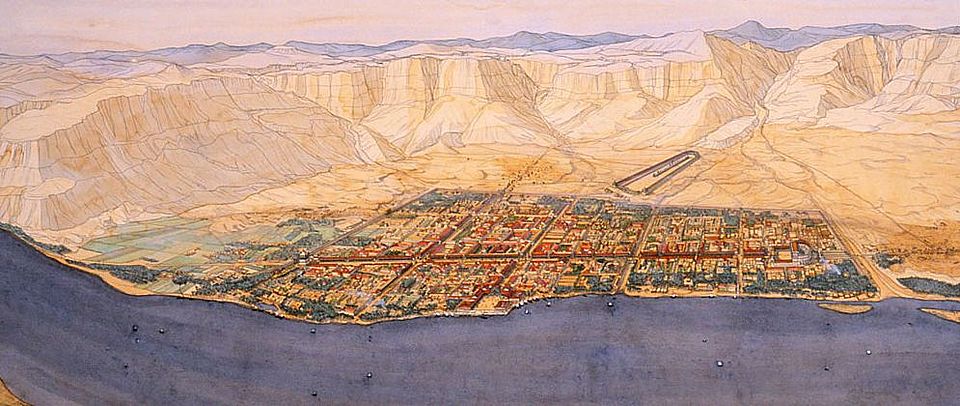Antinoopolis, founded by Hadrian in 130 CE, provides an unparalleled variety and quantity of data, which allow the fine-grained reconstruction of urban life in all its aspects: political and administrative, religious and cultural, economic and social. The emphasis will be on the continued vibrancy of city life throughout the two periods under consideration. The project aims to describe the historical profile of the city of Antinoopolis, which became capital of the Thebaid under Diocletian and one of Egypt’s second city in the Byzantine period. We also seek to write the history of the ancient city from the bottom up, looking at the lived experiences of its inhabitants.
Objectives
- To collect, criticize, and integrate textual data for the study of Antinoopolis in the Roman and late antique periods and find points of convergence with the archaeological material.
- To build an on-line prosopography of the people of Antinoopolis in connection with spatial and archaeological data so as to better understand the individual and collective agency of the urban population vis-à-vis city administration and imperial policy, changing social and economic structures, and cultural and religious dynamics;
- To offer a synthesis of urban history or, if you will, an urban biography of a Roman and late antique city in Egypt, emphasizing the city’s individuality, its fabric and “feel,” seen in the context of the transition from the Roman to the late antique period.
Sources and datasets
The diversity of languages and writing materials and the long history of archaeological research at Antinoopolis make it an exceptional site for the history of urban development.1 In addition to numerous papyri, literary texts, ancient codices, epigraphic material, archaeological data are abundant to an extent not found elsewhere in Egypt. Important for the history of late antique culture and early Christianity are the many fragments from ancient books found in Antinoopolis: no fewer than 264 items (LDAB). The whole corpus is comprised of Classical, Christian, legal, and medical texts and languages include Greek, Coptic, Latin, and even Gothic. All of this suggests that Antinoopolis was a multicultural metropolis and a significant center for learning and education.
Methodology
Since the project’s inception, the team has been assembling textual materials, collecting literary testimonies, importing epigraphic corpora from relevant publications, and reviewing the papyrological corpus for Antinoopolis. After these preliminary steps, the textual data must be integrated and contrasted with the archaeological evidence. An on-line open access digital urban archive, comprised of a prosopography, gazetteer, and chronicle of urban life will provide a meaningful way to analyse and structure the data.
Starting with the prosopography and gazetteer, the project team is currently processing the raw data for 3818 people provided by Trismegistos People and reviewing toponyms and micro-toponyms belonging to, or connected with, Antinoopolis. In addition to the information contained in a prosopography (sex, age, occupation, or legal status) and a gazetteer (place name, geo-reference, architecture), the digital archive will record events that took place within or in relation to the city of Antinoopolis. This way, the project will elucidate social interaction in an urban setting and so deliver micro-histories of the urban communities of Roman and late antique Egypt.
To give only a few examples, case-studies of the “people of Antinoopolis” will include individuals such as Kollouthos, the saint, martyr and healer of Diocletian’s persecution, or Dioskoros of Aphrodito, the notary and poet active in the second half of the sixth century, as well as social groups, e.g. the first citizens or the community of first Christians in Antinoopolis. In so doing, the project moves beyond Roman and late antique historians’ predominant use of dossiers of papyri to uncover the doings of local communities or institutional aspects and relies on a more eclectic and comprehensive body of evidence. Case-studies based on multiple types of evidence can yield multiple perspectives on change over time in urban space and the people who inhabit it.
1. Here we would like to acknowledge the archaeological work and essential contribution accomplished over the last twenty years under the direction of Prof. Rosario Pintaudi and financed by the Istituto Vitelli, Florence, at the site of Antinoopolis. For further information, including the forthcoming website dedicated to this dig, please click here.

